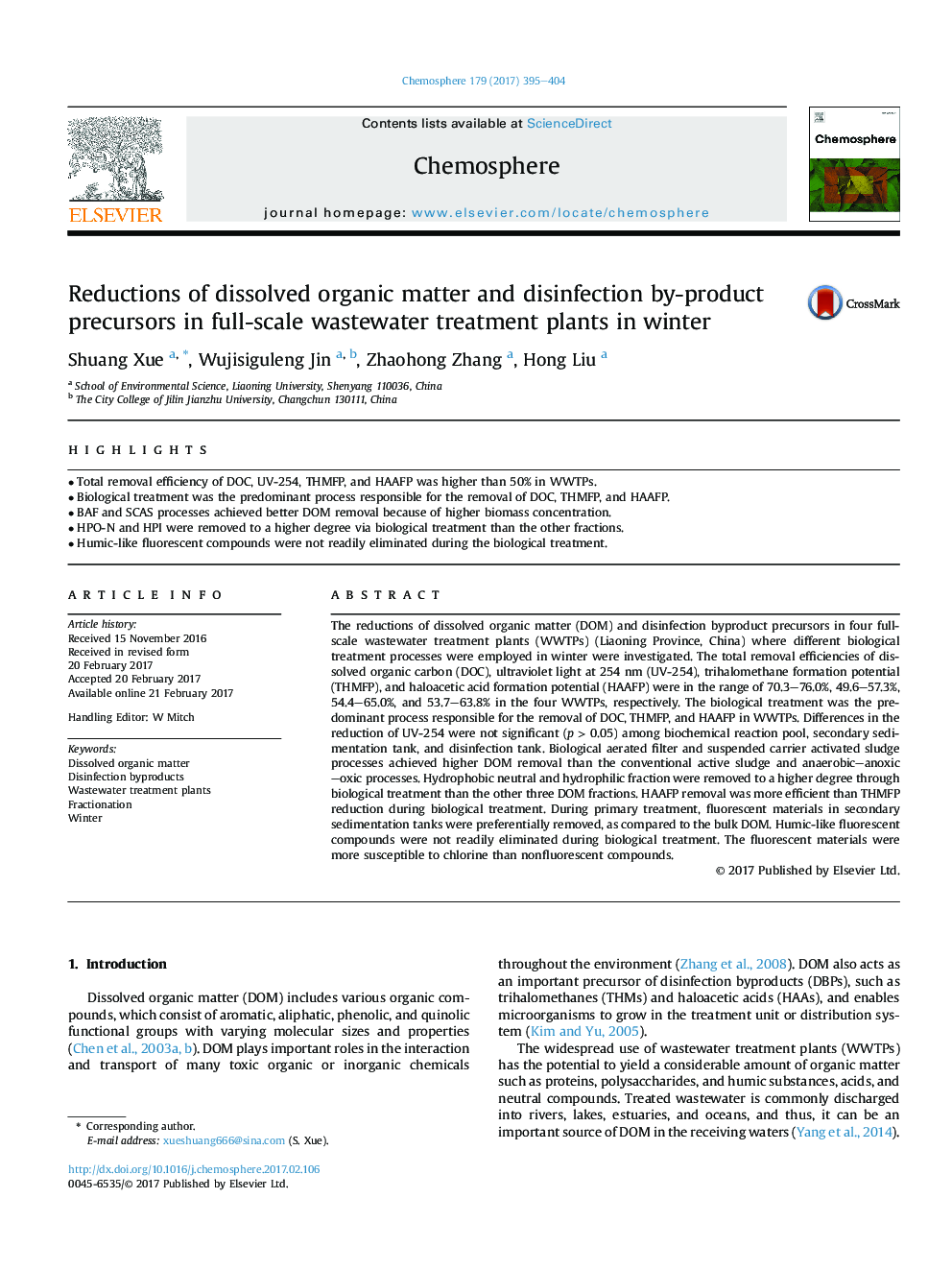| کد مقاله | کد نشریه | سال انتشار | مقاله انگلیسی | نسخه تمام متن |
|---|---|---|---|---|
| 5746571 | 1618792 | 2017 | 10 صفحه PDF | دانلود رایگان |
- Total removal efficiency of DOC, UV-254, THMFP, and HAAFP was higher than 50% in WWTPs.
- Biological treatment was the predominant process responsible for the removal of DOC, THMFP, and HAAFP.
- BAF and SCAS processes achieved better DOM removal because of higher biomass concentration.
- HPO-N and HPI were removed to a higher degree via biological treatment than the other fractions.
- Humic-like fluorescent compounds were not readily eliminated during the biological treatment.
The reductions of dissolved organic matter (DOM) and disinfection byproduct precursors in four full-scale wastewater treatment plants (WWTPs) (Liaoning Province, China) where different biological treatment processes were employed in winter were investigated. The total removal efficiencies of dissolved organic carbon (DOC), ultraviolet light at 254 nm (UV-254), trihalomethane formation potential (THMFP), and haloacetic acid formation potential (HAAFP) were in the range of 70.3-76.0%, 49.6-57.3%, 54.4-65.0%, and 53.7-63.8% in the four WWTPs, respectively. The biological treatment was the predominant process responsible for the removal of DOC, THMFP, and HAAFP in WWTPs. Differences in the reduction of UV-254 were not significant (p > 0.05) among biochemical reaction pool, secondary sedimentation tank, and disinfection tank. Biological aerated filter and suspended carrier activated sludge processes achieved higher DOM removal than the conventional active sludge and anaerobic-anoxic-oxic processes. Hydrophobic neutral and hydrophilic fraction were removed to a higher degree through biological treatment than the other three DOM fractions. HAAFP removal was more efficient than THMFP reduction during biological treatment. During primary treatment, fluorescent materials in secondary sedimentation tanks were preferentially removed, as compared to the bulk DOM. Humic-like fluorescent compounds were not readily eliminated during biological treatment. The fluorescent materials were more susceptible to chlorine than nonfluorescent compounds.
Journal: Chemosphere - Volume 179, July 2017, Pages 395-404
